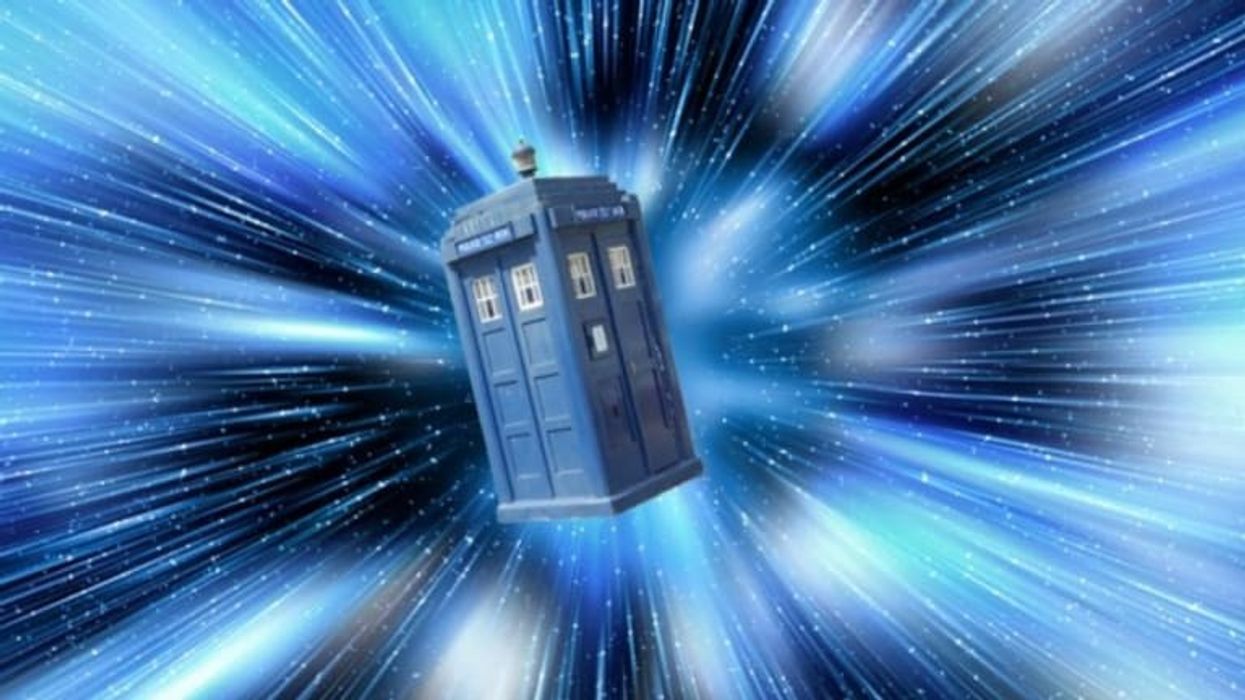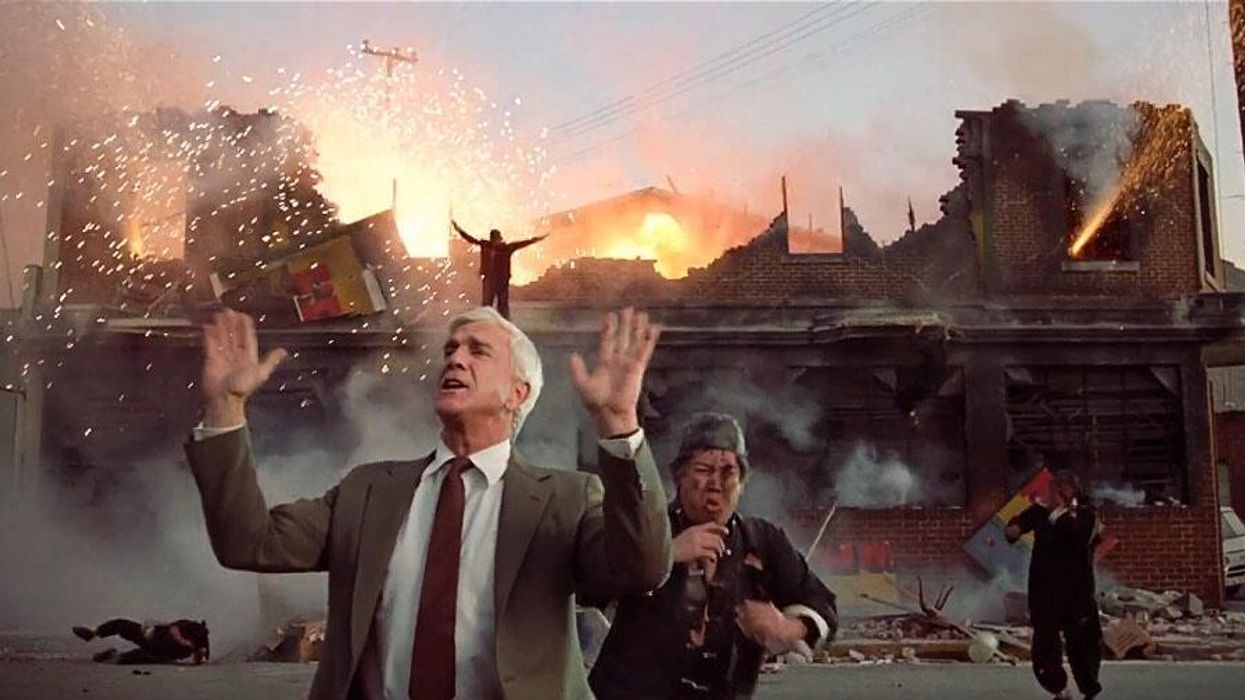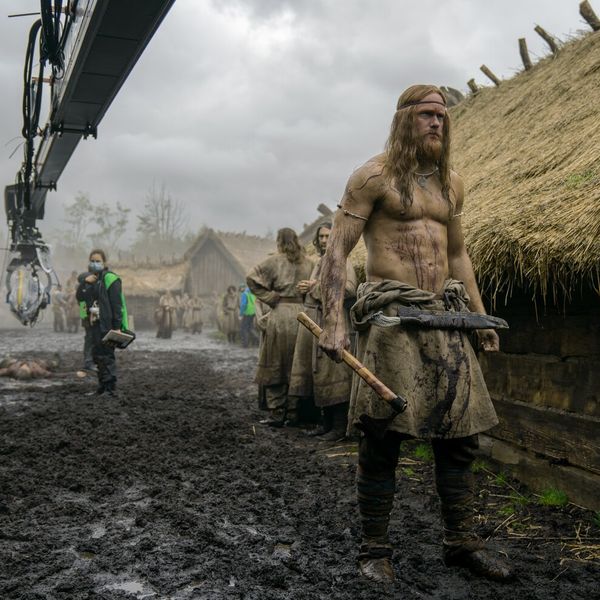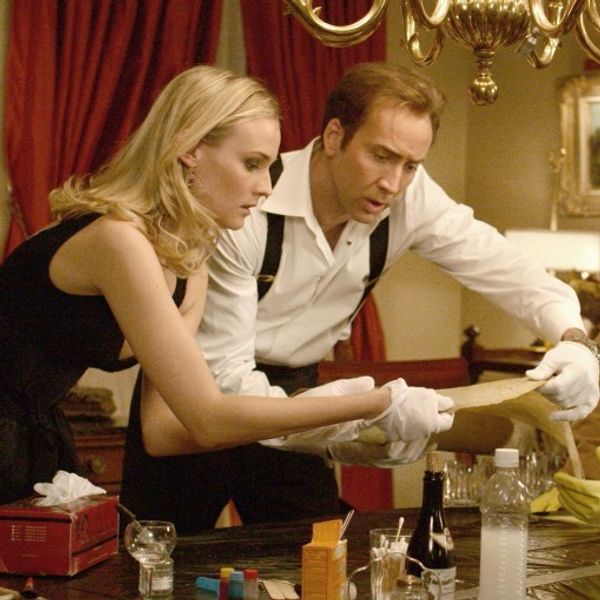An Intricate Breakdown of Time Travel Movies
Time travel is one of the trickiest things to write. So how did the masters get it done?

'Dr Who'
Since HG Welles sent us back and forward in time with The Time Machine, time travel has been an incredibly popular motif in popular culture. Film and television have always asked questions about what it would be like to move backward and forward... in time. (We're gonna say "time" a lot, so buckle up.)
But every time that questions is asked...it comes in a different way.
Yes, much like time travel, there are rules, causes, and effects when writing it into your story.
Today I want to look at a few different time travel movies and break them down to help your screenplays. There are no short cuts, but there are lots of things you need to ask yourself while working in these modes.
Check out this video from MinutePhysics and let's talk after the jump...IN TIME...
Time Travel in Fiction Rundownwww.youtube.com
Time Travel Movies Defined
Time travel movies are a subgenre of science fiction or fantasy where characters journey to different points in time, either the past or the future. They use time travel as a key plot element, exploring the potential consequences, paradoxes, and fascinating "what if" scenarios made possible by bending the flow of time.
Subgenres and Styles Within Time Travel Movies
- Hard Sci-fi: Focus on plausible (or at least theorized) scientific explanations for time travel, emphasizing its mechanics and implications. (Primer, Interstellar)
- Action Adventure: High-stakes chases, battles across timelines, and saving the world from temporal threats. (Terminator, Looper)
- Comedy: Slapstick humor from fish-out-of-water characters, absurd paradoxes, and attempts to rewrite personal histories. (Back to the Future, Bill and Ted's Excellent Adventure)
- Mind-Bending Thriller: Complex plots, twists, multiple realities, and the question of whether the future is truly set. (12 Monkeys, Predestination)

A Breakdown of Time Travel Movies
Let's break down the fascinating world of time travel movies, including common themes, paradoxes, and why they captivate us.
Common Approaches to Time Travel Mechanics
- The Single Timeline: Changes made in the past directly rewrite the future the traveler came from. Creates high stakes and potential for major consequences. (Examples: Back to the Future, Terminator).
- Multiple Timelines and Alternate Realities: Each trip to the past creates a new timeline, branching off from the original. Reduces risks to the traveler's reality but can get complex. (Examples: Avengers: Endgame, many comic book storylines)
- The Closed Loop/Predestination Paradox: The future is already set, and time travelers' actions are what caused the events to happen in the first place. Mind-bending and challenges free will. (Examples: 12 Monkeys, Primer, Predestination)
- The Grandfather Paradox: What happens if you go back in time and prevent your own existence? This classic paradox highlights the inherent contradictions of some time travel concepts.
Popular Themes in Time Travel Movies
- Righting Wrongs: Fixing past mistakes or preventing tragedies. This can be personal or on a grander, historical scale.
- Forbidden Love: Romances across time periods, with the temporal divide creating tension and bittersweet elements.
- Self-Discovery: Journeys through time offering characters insights into their past, present, and potential futures.
- Technology Gone Wrong: The dangers of playing with time, from unintended consequences to those who would exploit it.
- Fish Out of Water Comedy: Characters from one era thrust into another, leading to humorous clashes and misunderstandings.
Why Are We Fascinated by Time Travel Stories?
- What-Ifs and Second Chances: The ability to change the past taps into our regrets and desires for do-overs.
- Historical Curiosity: Time travel lets us visit eras we can otherwise only imagine.
- The Thrill of the Impossible: Seeing the scientifically impossible on screen sparks our sense of wonder.
- Philosophical Questions: Time travel raises questions about fate, causality, and the nature of our existence.
Challenges of Time Travel in Storytelling
- Plot Holes and Paradoxes: Time travel is inherently prone to logical inconsistencies. Skilled writers navigate them carefully, while others lean into the absurdity.
- Maintaining Suspense: If the past can be changed, why should we care about the present jeopardy? Well-crafted stories balance the stakes.
How to Write Time Travel in Film and TV
Okay, so you want to write some time travel screenplays. We have a course you can take to learn the basics of screenwriting, but if you want to learn about time travel stay right here. Or go into the future. I'm new to this. Or am I?
Time travel comes in lots of different shapes and sizes. From movies that try to do it realistically, like Ender's Game and Interstellar, to stories about different timelines and changing the future, like Back to the Future and Hot Tub Time Machine.
You even have shared past and future movies like Looper and Prisoner of Azkaban.
If all this is confusing, you're not alone! Go back in time and watch the video, I told you it would help!
If you refuse, the only thing that can help your time travel story is CLARITY.
Be clear about the rules of your time travel scenario. It's what made Avengers: Endgame so epic and easy to understand. For those who casually love time travel, they understand that the narrative is used to show how actions and changes cause reactions to the future.
But not every movie does it the same.
Let's look at a few examples.
How to Write a Time Travel Movie Like Groundhog Day
Take Groundhog Day.
In this movie, Bill Murray always travels back to the same point in the past. There is no hard science attached to it, so what are the rules? Every morning his character wakes up in bed. If he lives? Same result. If he dies? Same result.
There is no clear way to move into the next day, though at the end we realize that the love of another and selflessness allows him to move forward.
While there's no clarity in the rules, we have clarity in what happens as the movie moves forward. This is a film about change. So, while the rules of time travel don't matter, the rules of the world do. This informs how Murray's character is written. We see him arc and change by exploiting these rules. His memory of the day stays intact while other people's memories do not.
So, what do you do if you want to write something like Groundhog Day?
I would decide on the theme first. It's what drives the story and what winds up making all the threads work in the end.
But Groundhog Day is an outlier in time travel. Like A Christmas Carol, it's not totally science fiction.
So, let's dig into a couple of other examples to learn how they handle story.
More Time Travel Movie Examples
I'd venture a guess that most people get excited about time travel after viewing Back to the Future for the first time. A classic and perfect movie, this story takes on the most popular storyline within time travel.
Can what I do in the past change my future?
So let's talk clarity.
If you want to write something similar to Back to the Future, you need to decide on two things:
- Is there any overlap with past and future versions of yourself?
- Will there always be one consistent future?
In Back to the Future, the goal is ALWAYS to get back to where you belong. You can run into past iterations of yourself, but it's advised against it. Every action causes a reaction that changes the future.
In the first movie, Marty's goal is to restore the future when he alters it. Then he accidentally makes it better.
Over the course of the trilogy, his journey back to his present allows him to both avoid himself, meet his ancestors, and change the world for the better.
If you want to write a movie with similar rules, you need clarity.
Start with your logline: What's the character's goal?
Once you have the goal, outline your story through time. Clarity comes in your characters' actions. We need to know what they do and how it affects the future. Then work on what it takes to put things back to the way they belong.
The Realistic Approach to Time Travel
Finally, I wanted to take a look at something that was steeped in realism. I almost picked Primer, but it's so complicated that I dreaded breaking down all the rules. Instead, let's look at Ender's Game. And let's ignore that Orson Scott Card is an asshole.
Time travel in Ender's Game is fairly simple.
Characters that experience time travel slow things down, so while others age around them, their progress of time is normal. They cannot change the past or influence people, but they can see the future and stop/avoid things from happening to change the present.
Clarity here is also simple, characters have sort of a premonition of what's likely to occur, and act based on that. Like playing a game.
You see these time dilations in movies like Interstellar as well.
As Space.com puts it, "One feature of Einstein's equations is that time passes slower in higher gravity fields. So on a planet orbiting close to a black hole, a clock ticks much more slowly than on a spaceship orbiting farther away"
So when we travel in time, the people left behind age at a factor, depending on how far we're traveling.
Yeah, the more realistic you get, the more complicated. We have a whole infographic on Interstellar. It's wild.
When writing something realistic, clarity gets way more muddled. You have to explain the science, motivation, and consequences of any journey. That means sitting and really diagramming the rules of the world.
The chart was created by Mr. Dalliard and Gizmodo. It breaks down a ton of time travel in film and TV and can help inspire you with your script. Happy writing!

Time Travel Movies
- Back to the Future Trilogy (1985-1990): Teenager Marty McFly accidentally messes with his parents' past, jeopardizing his own existence. This iconic trilogy blends heart, humor, and thrilling time-hopping adventures.
- 12 Monkeys (1995): A convict from a bleak future is sent back to locate the source of a deadly virus that devastated humanity. This mind-bending thriller questions fate and the lengths we'll go to survive.
- Looper (2012): Hitmen in the future execute targets sent back in time. A unique, action-packed twist on the genre, with Bruce Willis and Joseph Gordon-Levitt facing off in surprising ways.
- Predestination (2014): A time-traveling agent chases a criminal throughout history, leading to a shocking, identity-twisting paradox. If you like mind-bending puzzles, this film is for you.
- Primer (2004): Two engineers accidentally create a time machine, leading to intricate plans and unintended consequences. Famously complex, this low-budget gem is for those who like a serious mental challenge.
- Bill & Ted's Excellent Adventure (1989): Two airheaded teens travel through time in a phone booth to collect historical figures for their history report. A lighthearted, endlessly quotable comedy.
- Hot Tub Time Machine (2010): Friends hit the hot tub and end up back in the 80s, trying to change their lives. Crude humor and nostalgia ensue.
- Interstellar (2014): Astronauts travel through a wormhole in search of a new home for humanity, with time dilation and mind-blowing concepts playing a major role alongside stunning visuals.
Time Travel TV Shows
- Doctor Who (1963-1989, 2005-Present): The Doctor, an alien Time Lord, travels through time and space in the TARDIS, battling foes and exploring the universe. A pop-culture icon with endless adventures, tones, and regenerating Doctors to discover.
- Outlander (2014-Present): A WWII nurse is swept back to 18th-century Scotland, caught between two eras and two loves. Historical drama, romance, and stunning landscapes collide.
- Dark (2017-2020): This German mystery series involves time travel, missing children, and interconnected families across generations. Complex, dark, and utterly captivating.
- Quantum Leap (1989-1993): Dr. Sam Beckett leaps into different people's bodies throughout time, putting things right before leaping again. A heartwarming show with a unique premise.
- Loki (2021-Present): Marvel's god of mischief messes up the timeline, leading to encounters with the TVA (Time Variance Authority) and multiple Loki variants. Blends humor, timey-wimey chaos, and surprising character depth.
What's next? Use our Beat Sheet to outline your script!
A beat sheet can help you pick moments that keep your narrative thrust moving forward. So why aren't you using one?
Click for more.














